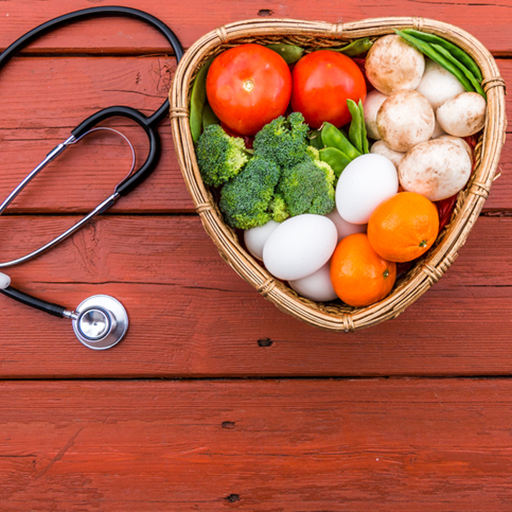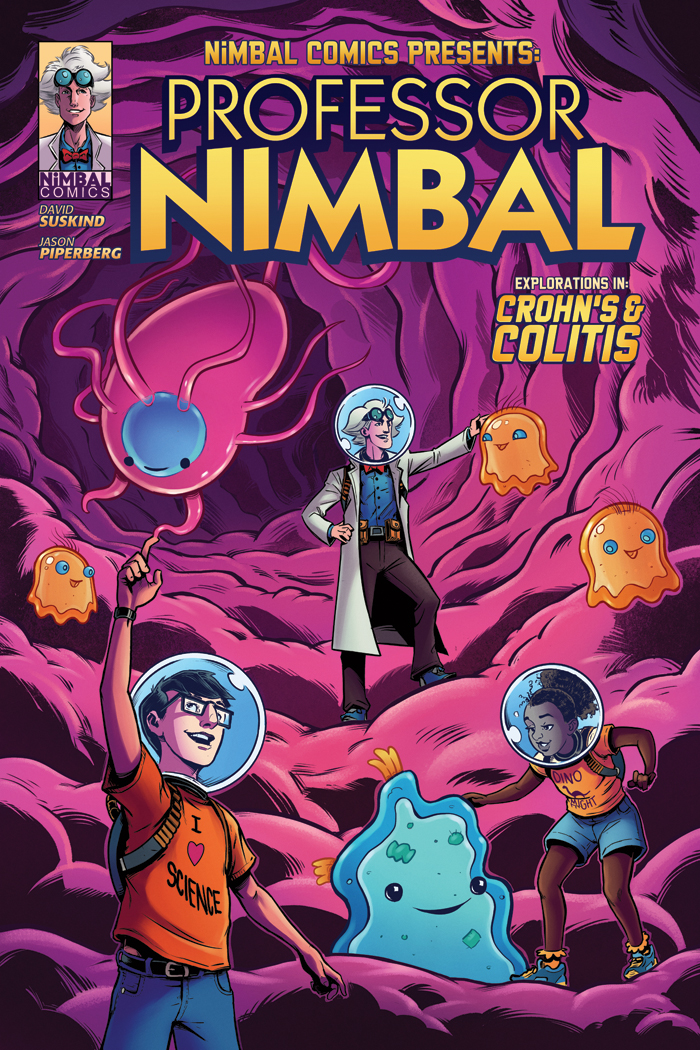Why does IBD occur: Genetics and Environment
The role of genes in developing IBD
Genes, genetic markers, contribute to the development of inflammatory bowel disease. Over 200 genetic risk markers that can lead to IBD have already been identified.
The most common gene abnormality found in Crohn’s is the NOD2 gene. About 15% of patients with Crohn’s have this abnormality. This gene, as well as many others, are involved in regulating what goes on in the lining of the intestine. Their role is to protect the lining—and therefore the person—from a bacterial invasion.
Bacterial invasion?! Sounds like war, right? And, in fact, for the person with IBD, that’s just what it is. These genes regulate the immune system, acting as a defense against bacterial invasion in the intestines and making sure that what takes place in the intestine stays in the intestine.
That said, the genetic abnormalities do not by themselves cause inflammatory bowel disease. A person can have them and still not develop IBD. A good example of this can be seen in identical twins, who share exactly the same genetic makeup. The chance of identical twins both having IBD is less than 50%. If genes alone caused IBD, it would occur in 100% of identical twins.
That means, of course, that we have to look for a second factor, something that triggers the disease process in people who are genetically susceptible. And that’s exactly what doctors and researchers are trying to figure out now.
The world of gut bacteria and fecal dysbiosis
Fecal dysbiosis. Sounds awful, right? Well, it is awful, and it seems to be the basic cause of IBD. What is it exactly? Dysbiosis literally means “bad bacteria.” In a person's body, it means a kind of bacterial imbalance. Considering just how many bacteria are in our intestines, a sudden crowd of dominant, belligerent, bully bacteria means, as you might well guess, trouble.
There are over 100 trillion microorganisms in our bowels. One hundred trillion! This is 10 times more than the number of human cells in the body! To make this picture even clearer, the human gut alone contains about three pounds of bacteria. Their collective genome encodes around 3 million different genes. That’s more than 100 times our own.Our bacteria live within us in large numbers and are very active!
Why do we have so many of them? When we think of bacteria, we automatically tend to regard them as something bad. However, these bacteria have been a part of us for as long as humans have been around. As we’ve evolved, they’ve evolved with us. Most of the time these bacteria help us. They break down indigestible carbohydrates and produce small-chain fatty acids, which our colons use as nutrients. They produce essential vitamins important for our overall health. They also “coat” our intestines, decreasing the possibility that “bad” bacteria can take over and infect our bowels.
If we think of our intestines as a diverse community within us, we call that particular population a microbiome. This refers to all of the microorganisms that live in our bodies: the good bacteria or “symbiotic” bacteria, the neither-good-nor-bad bacteria, the “commensal” bacteria, and finally, the not-so-good disease-causing bacteria called “pathogenic” bacteria.
Like all communities and the people in the city or town you live in, these microorganisms—our “microbiota”—change, move out, and adapt in response to changes in their environment. While the people in a city may fluctuate depending on economics, schooling, and other resources, the bacteria in your bowels change depending on the food you eat, the activities you do, and the medications you take. And just like people, bacteria also adapt to the environment that they’re in.
What’s growing in our intestines?
Let’s take it from the very beginning: When you were growing in your mother’s womb, your environment was a sterile one. You had no bacteria in your bowels. But as soon as you were born and left that nice, peaceful, sterile environment, everything changed. In fact, as we are being born, we are given some of our mother’s bacteria.
The variety and type of bacteria you receive as a baby depends on many factors. Your bacteria will be different depending on whether you were born by Caesarean section versus vaginally. They will also be different whether you were breast-fed or bottle-fed. These variations can create profound differences in your body, including the amount of infection and colic you may have had as a baby. If you were given antibiotics during your first year of life, your gut bacteria can and most likely will be altered. In fact, the use of antibiotics during this early period of growth is now linked with a higher chance of developing inflammatory bowel disease.
What’s growing? Lots and lots of bacteria. This happens because the intestines start to mature, and as a baby is introduced to more varied foods, more bacteria are encouraged to grow in turn. By a baby’s first birthday, the bacteria within an infant’s bowel is starting to resemble what we see in the adult microbiota but it still developing and it isn’t until 3 to 4 years of age that a more adult microbiota is formed. As we mentioned before, the sheer numbers we carry within us as adults are staggering—more than 100 trillion bacteria with more than 1,000 different species! This is an important part of growing and developing a child’s immune system, so that it can learn which bacteria are pathologic (bad) and which are good, or at least harmless.
Do these bacteria play a role in developing inflammatory bowel disease?
The fecal microbiome is extremely complex. Our current knowledge only scrapes at the surface of what is to be learned. Currently we think that there are both “good” and “bad” bacteria, plus a large number that may be neither beneficial nor harmful. All of these bacteria interplay with the immune system in ways yet to be understood that develop into IBD.
In animal studies the fecal microbiota appears critical for maintaining intestinal well-being. In animal models, certain genetically modified animals develop colitis only in the presence of bacteria. These animals will not develop colitis without bacteria in their gut. In human studies, individuals with inflammatory bowel disease have much less bacterial diversity. The mechanism by which this contributes to IBD is not well defined, but it could be that this decreased diversity may allow invasive bacterial species to increase, coupled with decreased protective bacteria. This could result in inappropriate immune cell activation and loss of immunologic tolerance. But we still have much to learn.
For doctors, however, the pressing question remains: Why has IBD become so common? Our genes make us who we are, often determining whether we will be sick or healthy. They have been reproduced in humans for thousands of years. Over time, the bacteria within our bowels have adapted to us as well, meaning that our bodies have not only gotten used to them but use them—even depend on them—for our overall well-being. So why now are the bacteria of many people making them sick and allowing IBD to become such a common disorder of the bowels?
The answer is not totally clear, but if we believe that fecal dysbiosis—bad bacteria within our bowels—is making us sick, we ask ourselves, why have the bacteria that have adapted to us over the millennia changed? Many possibilities abound; however, two key culprits are most likely to blame: antibiotic use and dietary changes.
The role of modern antibiotics
While we’re not going to go into extensive detail regarding the impact of antibiotics on the development of IBD in this book, it’s important to recognize that antibiotics have played a critical and positive role in human health history, saving many lives.
However, what we are discussing now is the current overuse of antibiotics and its negative effects on our health. The most obvious is the bacterial resistance we see and read about in the media. What does this mean? When antibiotics were first prescribed to knock out bad bacteria that was causing illness, over time these bacteria became resistant to the effects of the medicine, making the impact of the drugs less effective or even completely ineffective. Not only did the antibiotics not work, but the bacteria grew stronger and could even make us sicker.
Research suggests that the early use of antibiotics is strongly associated with IBD development. In fact, when antibiotics are used in early childhood, there is an 84% greater chance of developing IBD than for those children who had not received antibiotics. Also, the overall risk of developing IBD in association with antibiotics decreases as a child gets older. This suggests that antibiotics may indirectly affect a child’s developing immune system by killing beneficial bacteria within the bowels.
Of course I am not suggesting that antibiotics should never be used to combat disease in kids. It only means that risk needs to be weighed against the benefit.
What else affects what bacteria are in our intestines?
Food, drink, and anything else we put into our mouths affect our bacteria. We know this from a variety of examples. First, industrialized countries like the United States have a much higher rate of inflammatory bowel disease. When people immigrate to the U.S. from less developed countries, they are very unlikely to have or ever develop IBD. All of that changes for their offspring, who have the same chance of developing IBD as people who have lived in the U.S. for generations, because first-generation children grow up eating the foods from the country in which they are born, unlike their parents.
Second, strong evidence exists that inflammatory bowel disease, specifically Crohn’s, is affected by nutrient intake. A high total intake of dietary fats, polyunsaturated fatty acids, omega-6 fatty acids, and meats has been associated with an increased risk of Crohn’s disease and ulcerative colitis; inversely, diets high in fiber and fruit are associated with a decrease in Crohn’s disease.




